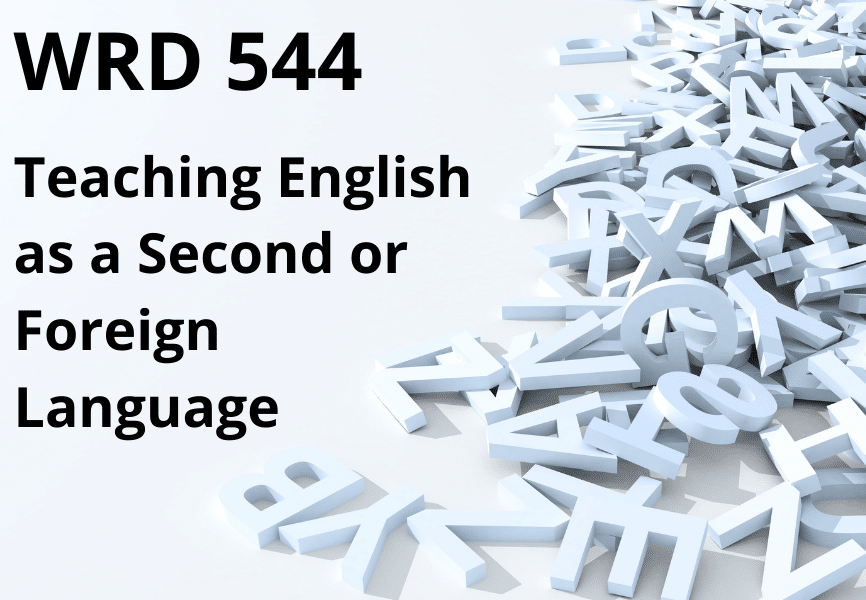The WRD program is home to many bright and critical future educators. Some come to us as public school teachers already and earn their master’s in our MA program. Other MA students hope to teach in two-year colleges, community colleges, overseas, or in other settings. Regardless, student populations are, at all levels, comprised of students with different relationships to the English language. While there is more structure in public education due to tight state regulation of curriculum, teachers in settings beyond public schools often have more freedom in deciding how their class will be taught. For professors like Jason Schneider, this means teachers must prioritize a critical understanding of their students. This fall quarter 2021, Jason will teach WRD 544 Teaching English as a Second or Foreign Language, where he says students will learn about frameworks for deciding how to effectively teach English to students learning it as an additional language.
While other courses in the WRD program are rhetoric courses, this is an applied linguistics course, Dr. Schneider said, albeit one informed by a rhetorical approach. Applied linguistics can be understood as the study of language as it offers utility to everyday life, including the learning and teaching of language. Dr. Schneider described the course as an introduction to the field of TESOL (Teaching English to Speakers of Other Languages), and says it will focus on “helping students learn how to think about teaching decisions in context.” He noted a big theme to be moving away from any belief that there is a clear right or wrong way to teach and understanding that teaching English is always context specific. In this model, the course emphasizes the importance of listening to students to find out what their needs are.
A requirement for the TESOL Certificate, this course fulfills the Methods category. However, any interested WRD students can take the course, not just students completing the certificate. “I try to cover a range of topics that I think can be applied by teachers in diverse situations”, Jason said. Two methods definitely covered in the course are Communicative Language Teaching and Task-based Language Teaching. Both emphasize the function of English in everyday situations. About teaching students how to employ these methods, Jason admitted he will focus on his students’ understanding of the meta-knowledge fundamental to TESOL.
Jason previewed two projects featured in the course. The first is an observation of any ESL classroom paired with a reflection using the coursework. Another project involves developing a practice lesson with a partner, where the class will participate and offer feedback on your lesson. The assignment will address strategies for creating and executing a detailed lesson plan. With the idea that there is no one “right way to teach”, or to make a lesson plan, students are afforded a lot of creativity and choice in the project, but all choices will be discussed and critiqued as a class.
Jason added that he wants students to walk away from the course with an understanding of “the reality of English in the world,” including the reality that English has often played an imperialistic role, both in the past and the present. A critical understanding of English in the world, he says, helps students understand the needs of English language learners as people who arrive in the classroom with their own languages, cultures, and identities.. English language teaching is always political, and there are two (or more) positions; English as a weapon of colonization or as a tool for cooperation and advancement. Jason wants students to consider the stance that “English shouldn’t subtract from the value of another language or culture.” Instead, students are encouraged to think of ways that English can add to learners’ home languages and cultures and to potentially offer them new life opportunities.
